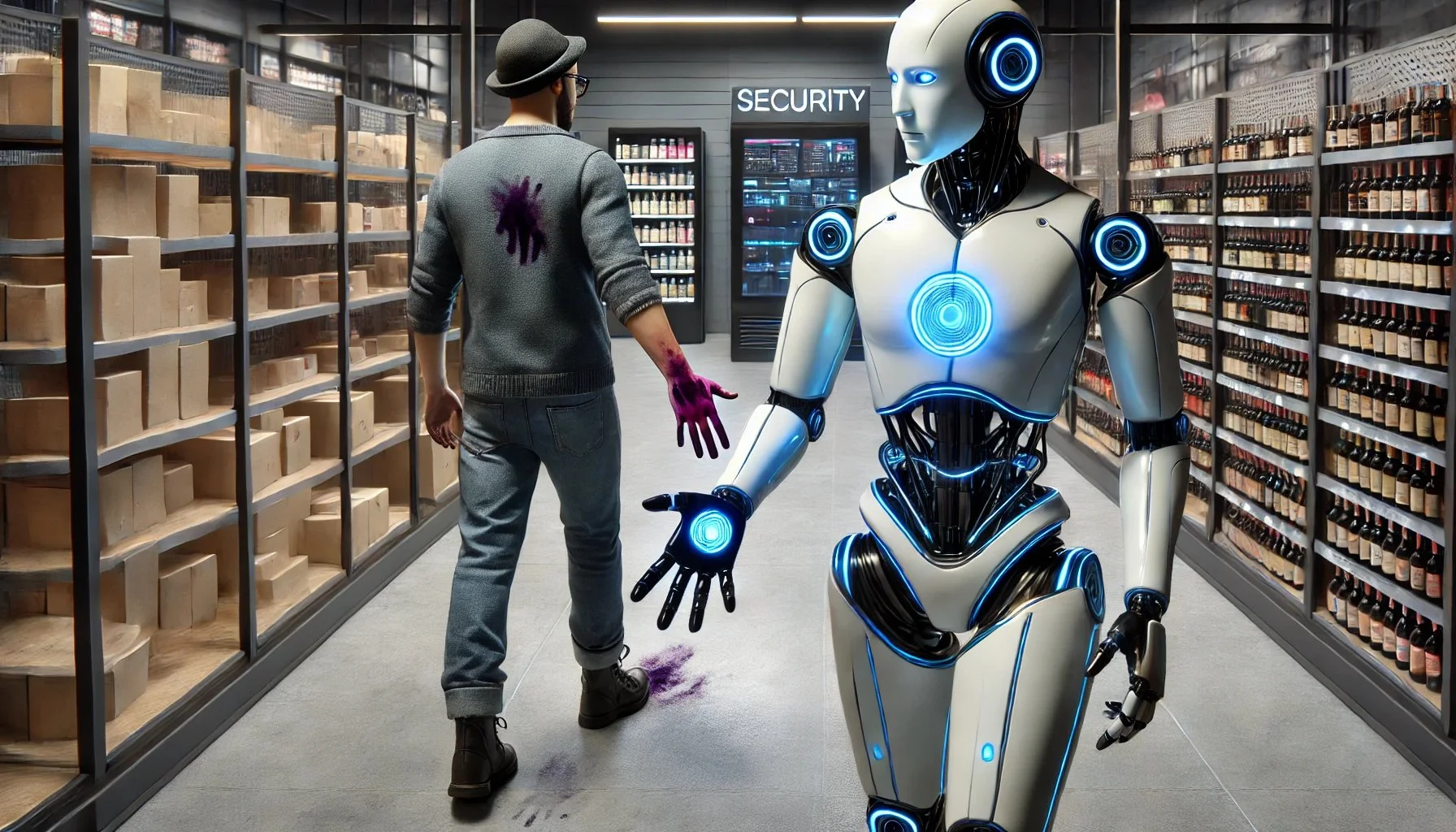AI Robot Spots Shoplifter….
The retail industry is facing an unprecedented challenge. According to a recent National Retail Federation study, shoplifting incidents have skyrocketed by 93% compared to pre-COVID levels, with retailers experiencing an average of 177 shoplifting incidents per day in 2023. Even more concerning, 73% of retailers report that shoplifters are showing increased violence and aggression compared to just a year ago. In this environment, retailers are discovering that sometimes the most effective solutions combine both old and new technologies.
While AI and advanced technology capture headlines, ink tags remain one of the most effective theft deterrents in the retail security arsenal. These seemingly simple devices work on a fundamental principle: benefit denial. Unlike traditional security tags that merely trigger alarms, ink tags ensure that stolen merchandise becomes unsellable and unwearable if tampered with. This direct consequence has proven remarkably effective at deterring both opportunistic thieves and organized retail crime groups, who are primarily motivated by the potential resale value of stolen goods.
The psychology behind ink tags' effectiveness is straightforward – if a thief can't profit from or use the stolen merchandise, there's no incentive to steal it in the first place. This benefit denial approach has proven particularly effective against the rising tide of organized retail crime, where groups specifically target high-value items for resale. When these items are protected by ink tags, the risk of ruining expensive merchandise often outweighs any potential profit.
However, modern retail security isn't about choosing between old and new technologies – it's about strategic integration. The next generation of retail security combines the proven deterrence of ink tags with sophisticated AI-powered systems. These platforms go beyond simple tag-and-alarm functionality, incorporating machine learning algorithms that can detect and respond to suspicious patterns in real-time. For instance, when multiple individuals exhibit coordinated movement patterns – a common signature of organized retail crime – AI systems can immediately alert security personnel and begin tracking the potential threat.
The rise of coordinated theft is particularly troubling, with 62% of retailers reporting an increase in multi-person theft incidents. While ink tags provide robust item-level protection, AI-enhanced security systems can:
- Track multiple suspicious actors simultaneously across store locations
- Identify known offenders through pattern recognition
- Coordinate with inventory systems to flag unusual product movement
- Interface with store cameras to provide real-time surveillance of high-risk areas
This multi-layered approach is crucial in addressing the growing concern of violence in retail settings. With 91% of retailers reporting increased aggression compared to 2019, the ability to predict and prevent confrontations before they escalate is crucial. AI-enhanced security systems can identify potentially aggressive behavior patterns early, while ink tags serve as a passive deterrent that requires no staff intervention.
The investment in such comprehensive security measures aligns with retailers' increased focus on protection – 71% have already increased their budgets for employee training related to workplace violence. The combination of benefit denial through ink tags and AI-enhanced security systems provides staff with multiple tools to handle potential threats safely.
As NRF Vice President David Johnston notes, "Protecting store associates and customers, coupled with reducing today's levels of violence and retail crime, requires a whole-community approach and collaboration across all stakeholders." This includes coordinating between retailers, law enforcement, and technology providers to develop comprehensive security solutions that leverage both proven methods and cutting-edge technology.
Looking ahead, the future of retail security lies not in choosing between traditional and modern solutions, but in thoughtfully combining them. While AI and advanced technology will continue to evolve, the fundamental principle of benefit denial through ink tags remains a cornerstone of effective retail security. By integrating these approaches, retailers can create robust security systems that address both opportunistic theft and sophisticated criminal enterprises.



